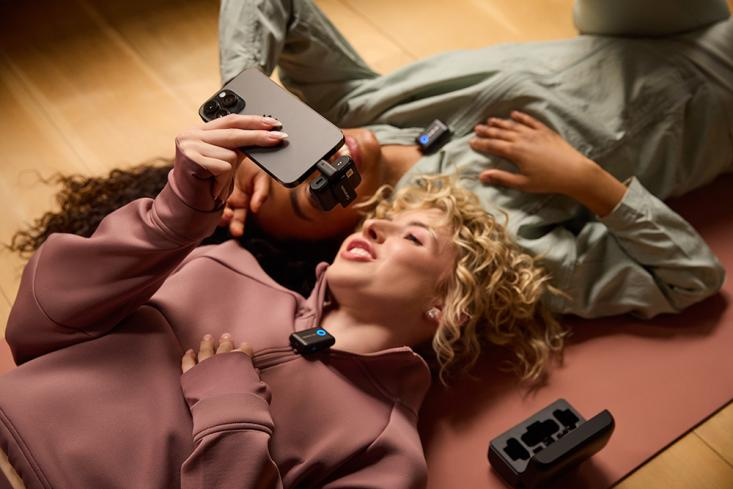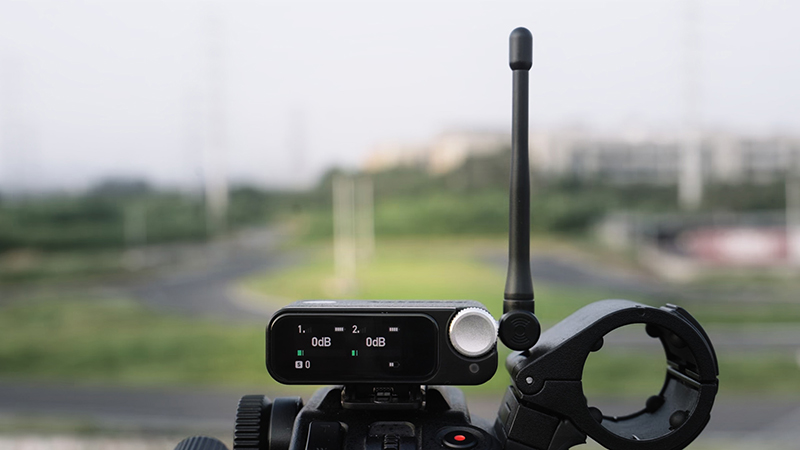For people who make videos for YouTube, podcasts, report the news, or plan events, a reliable wireless microphone is a must-have for getting professional-quality sound. There are a lot of choices on the market, from cheap wireless mics for recording YouTube videos to high-end broadcast microphones for important events. But it can be hard to pick the best portable microphone because there are so many features, frequencies, and technical specs to choose from. This complete guide will help you choose the best wireless microphone system for your needs, whether you're starting a vlog channel, doing field interviews, or running live events.
When selecting the best wireless microphone for your needs, several crucial technical factors come into play:
To make seamless audio, you need to know how to make devices work together. There are many ways to connect to modern wireless mics, such as standard 3.5mm jacks, XLR connections, and digital interfaces. If you are a content creator, make sure that your portable mic works with your camera or smartphone. Balanced XLR outputs are often needed for professional broadcast mics to connect to mixers or PA systems. Before you buy something, you should always check what kind of input your receiving device needs.
The frequency band that your wireless microphone works on has a big effect on how well it works. The 2.4 GHz frequency band works great indoors, which makes it ideal for recording podcasts and YouTube videos. It offers good resistance to interference from other electronic devices and doesn't require a license. Professional broadcasting and big events prefer UHF systems, which work between 470 and 698 MHz because they have a superior range and can get through barriers better. However, in some areas, they may need to be coordinated with other frequencies.
The necessary transmission range depends on the environment you work in. Short-range systems (100–150m) are good for recording inside, small events, and making personal material where being close isn't a problem. When broadcasting outside, at weddings, conferences, or in big venues, long-range solutions (280–300m) are necessary. Physical barriers, sources of interference, and the weather can all affect the actual range.
For professional-level audio, you need to pay attention to a number of technical factors. A wide frequency response (usually 50 Hz–15 kHz) makes sure that the vocal range sounds normal. Seek a high signal-to-noise ratio (at least 70 dB) to cut down on background hiss. Advanced features like vocal boost make words clearer, and low-cut filters that can be adjusted between 75Hz and 150Hz get rid of unwanted low-frequency rumble and handling noise. These traits are especially important for professional recording and broadcast microphones.
How well the battery works can make or break a recording session. The short battery life (5–10 hours) is good for quick jobs and making content every day. A battery life of 10 to 20 hours gives you the freedom to shoot for longer periods of time and cover events. Choose systems that can run for more than 20 hours if you need to handle demanding situations like events that last more than one day or continuous broadcasting. Think about whether the system's batteries can be replaced or if they can be charged.
Buildings in professional settings need to be strong so they can stand up to regular use. If you want better longevity and RF shielding, choose a metal housing over a plastic one. Ratings for water resistance, like IPX5 or IP66, are very important for events and shootings that take place outside in bad weather. Wear-related problems can be avoided with good connectors and cables, and handling noise can be avoided with shock-mounting features. A long-lasting wireless microphone system may cost more at first, but it ends up being more cost-effective because it works better and lasts longer.
Let's look at the essential things that make professional wireless mics unique:
For professional audio recording, you need advanced noise-cancellation equipment. It is possible to get rid of annoying background noises like air conditioning or wind with low-cut filters, and vocal boost technology makes speech clearer both inside and outside. These features are especially helpful for broadcast mics and people who make content and need clear, focused audio in a variety of settings.
When used for business, a delay below 20 ms is very important. This sound transfer that happens almost instantly makes sure that live streaming, musical acts, and real-time broadcasting all happen at the same time. When you record live chats or YouTube videos, low latency stops the annoying echo effect and keeps the sound and video in the right place.
Timecode integration streamlines the post-production workflow by automatically synchronizing audio and video. This feature is invaluable for:
When you put these features together, you get professional-level performance from the best wireless mics. Some of these features might be available on basic portable mics, but professional broadcast and recording systems integrate all three elements. These features make workflows more efficient and output better for people who make material and work in broadcasting, which is why they buy more expensive equipment.
Let's explore how to match the best wireless microphone to different professional scenarios:
For vloggers, YouTubers, and TikTok creators, prioritize portability and device compatibility. Look for wireless microphones that offer:
Broadcast microphones for news reporting and field interviews require reliability and superior audio quality.
From conferences to concerts, live event microphones need:
Studio-based content creators should focus on:
For tech presentations, product launches, and corporate events:
For wedding photographers and event videographers:
Choose your wireless microphone based on your primary use case while considering potential secondary applications. The best wireless microphone system should grow with your needs and adapt to different scenarios as your content or broadcast requirements evolve.
Getting the best out of your wireless microphone depends on correct setup and maintenance. Let's cover the foundations:
Choose less crowded channels for 2.4GHz systems to minimise interference. UHF broadcast mics need frequency scanning before usage. Keep antennas away from metal objects and electronics; always point receivers in a clear line of sight to transmitters.
Check batteries before significant recordings and clean connectors once a month. Update firmware and store tools in a dry environment. Regular cable and connector inspections help to avoid unplanned breakdowns at crucial points.
Review antenna placement and interference sources for audio dropouts. Bad sound quality usually results from inappropriate gain settings or mic positioning. Try moving your setup or changing frequency channels to combat interference.
Create a quick pre-recording checklist: verify battery levels, test signal strength, check audio levels, and secure all connections. Keep backup batteries and spare cables handy for important events. Document successful setups for future reference.
If you experience problems, start with the basics: check battery levels, verify connections, and ensure you're within range. For persistent issues, try changing frequencies or locations before seeking professional help.
It doesn't have to be hard to choose the best wireless microphone. Pay attention to your main needs: Whether you are making news stories, YouTube videos, or managing live events, there is a great way for you. When making your choice, it's important to think about things like the frequency type, the range, and the battery life.
Don't forget that buying good tools will pay off in the long run. No matter if you choose a professional broadcast microphone setup or a simple 2.4GHz system, making sure it is properly maintained and set up will ensure it works reliably. Don't be afraid to get help from experts if you need it with certain apps or problems.
For big events, UHF mics provide ideal range and penetration beyond walls. Usually less expensive, 2.4 GHz performs well for close-range indoor use.
Indeed, every speaker needs his own transmitter. If you're going to record groups, make sure your receiver can manage several channels.
Most contemporary wireless mics interface with both. Just consider the kind of connection—some configurations might call for an adaptor.
Absolutely! Just search for versions resistant to weather and guarantee good signal strength. Usually, outdoor performance of UHF systems is better.